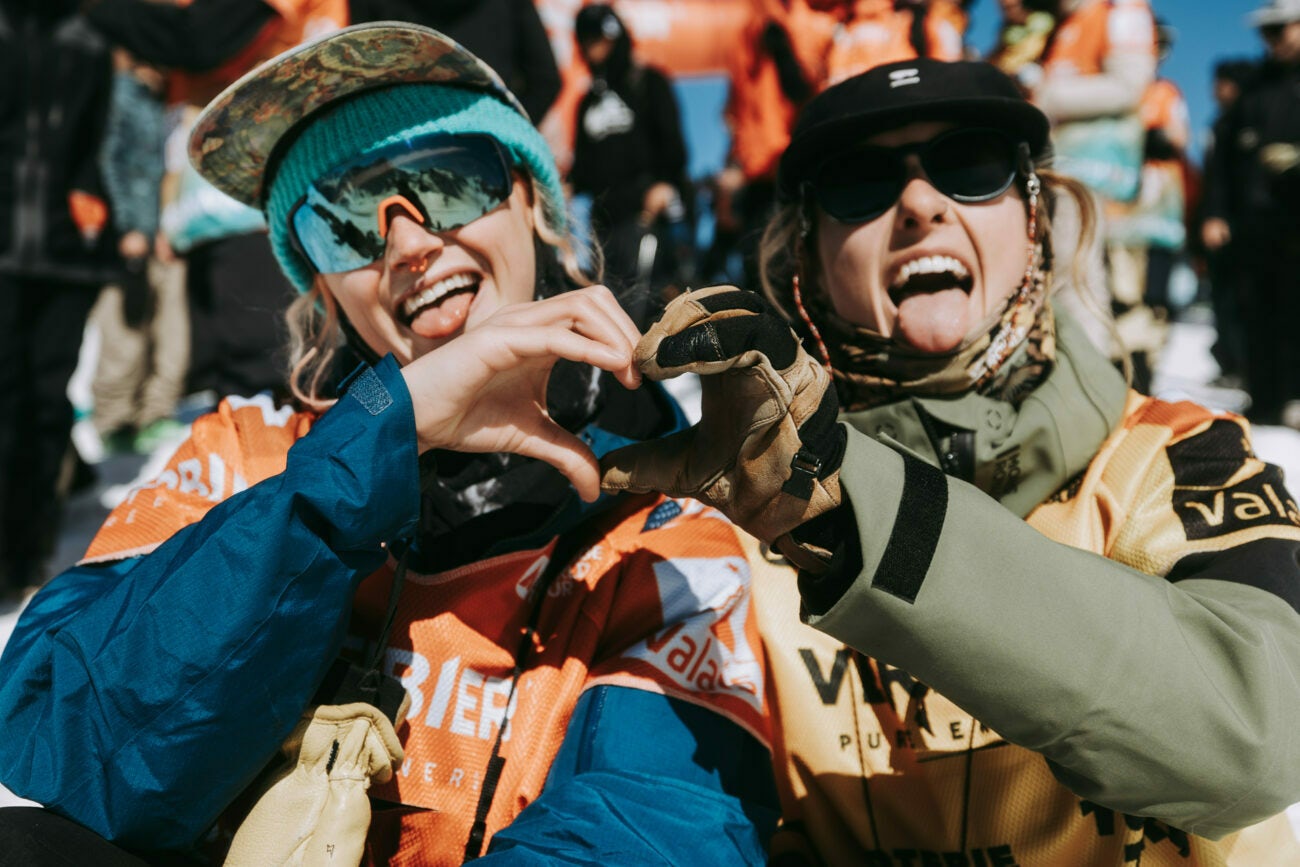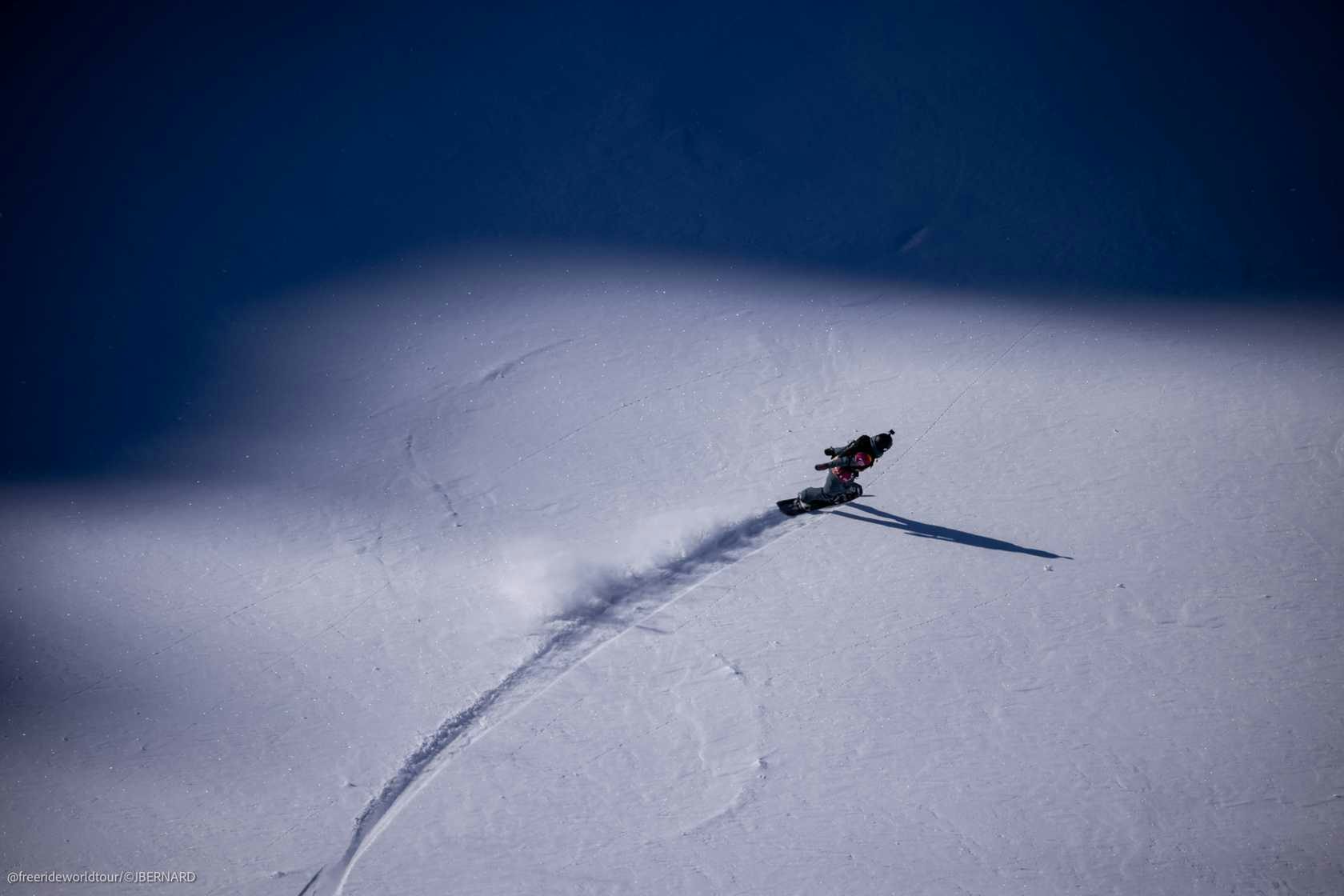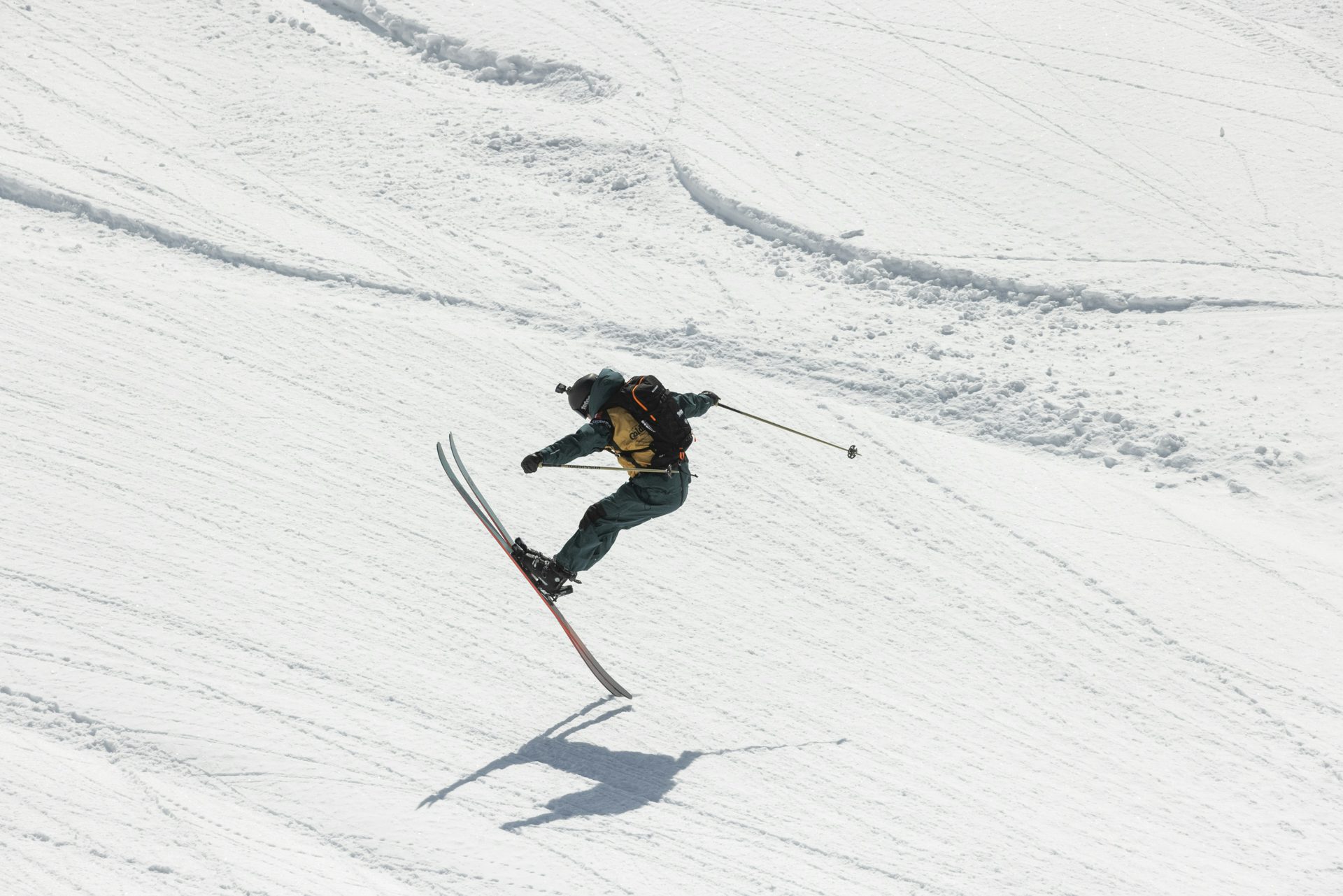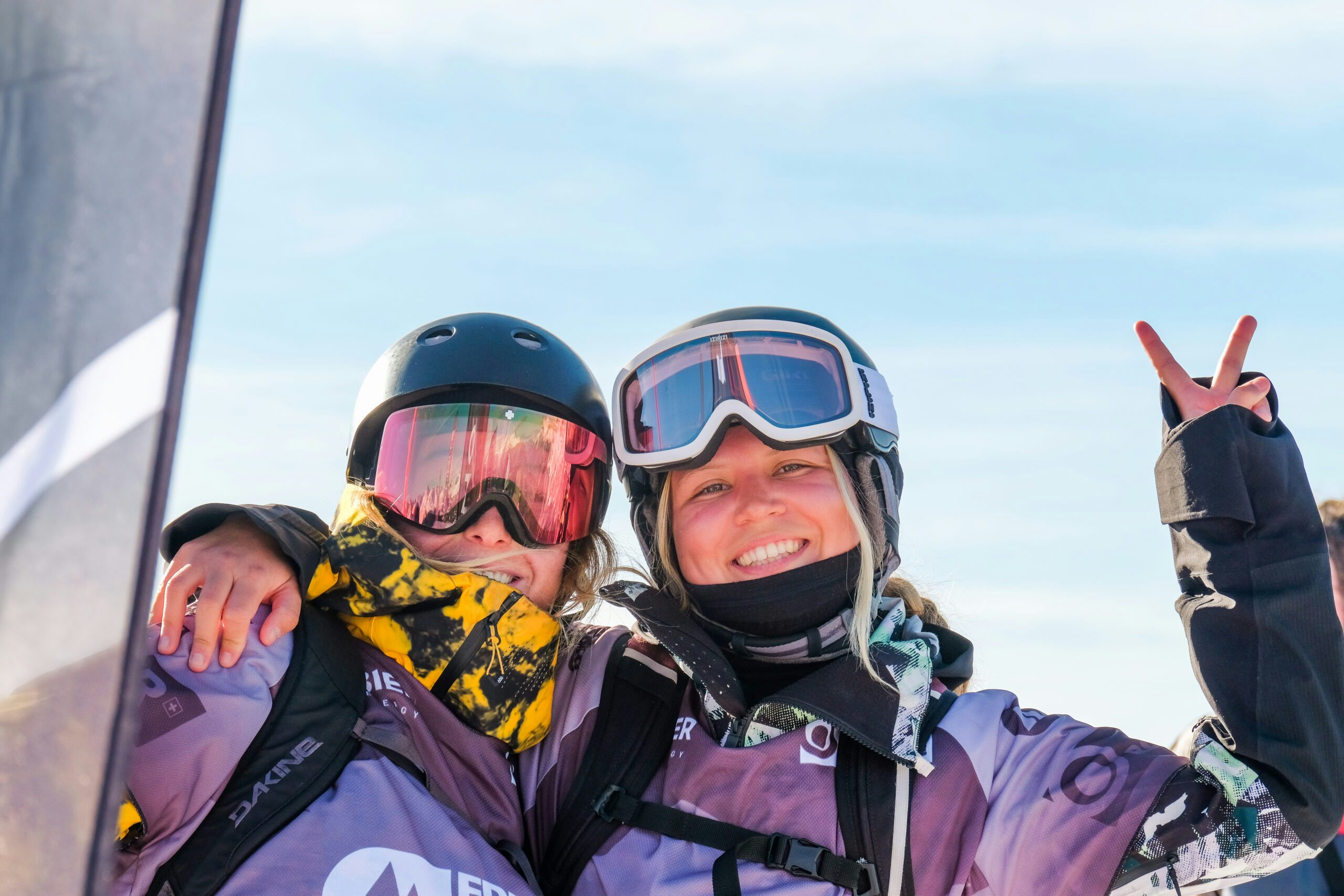Freeride History
What is freeriding?
What? You haven’t heard about it? It’s called freeride and it’s arguably the most exciting snowsport competition of the 21st century.
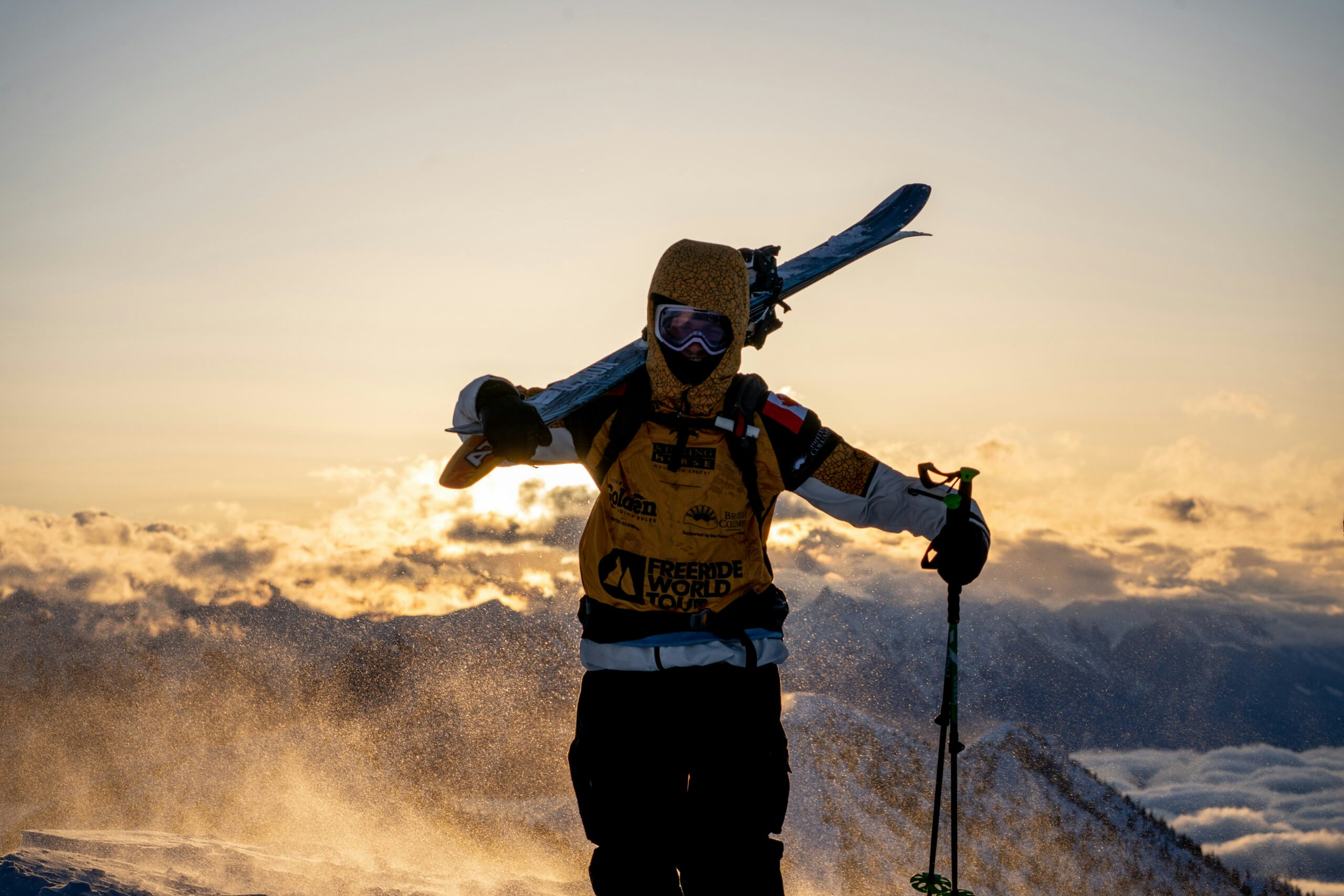
FREERIDING IS A philosophy.
It’s a vertical free-verse poem on the mountain. It’s the ultimate expression of all that is fun and liberating about sliding on snow in wintertime.
the freeride philosophy
What? You haven’t heard about it? It’s called freeride and it’s arguably the most exciting snowsport competition of the 21st century.
Forget placing slalom poles down the mountain. Forget building artificial jumps and hips and halfpipes and tabletops. Forget grooming the slopes even. Freeride contests are 100% natural, 100% clean. Indeed, the event is all about celebrating the god-given terrain features found on any mountainside in the most exciting and elemental format possible. There‘s a start gate at the summit and a finish gate at the bottom. That’s it. Best run down wins.
It truly is that simple. Think skiers and snowboarders choosing impossible-looking lines through cornices and cliff-faces and nasty couloirs. Think progressive: big jumps, mach-speed turns and full-on attack. Think entertaining.
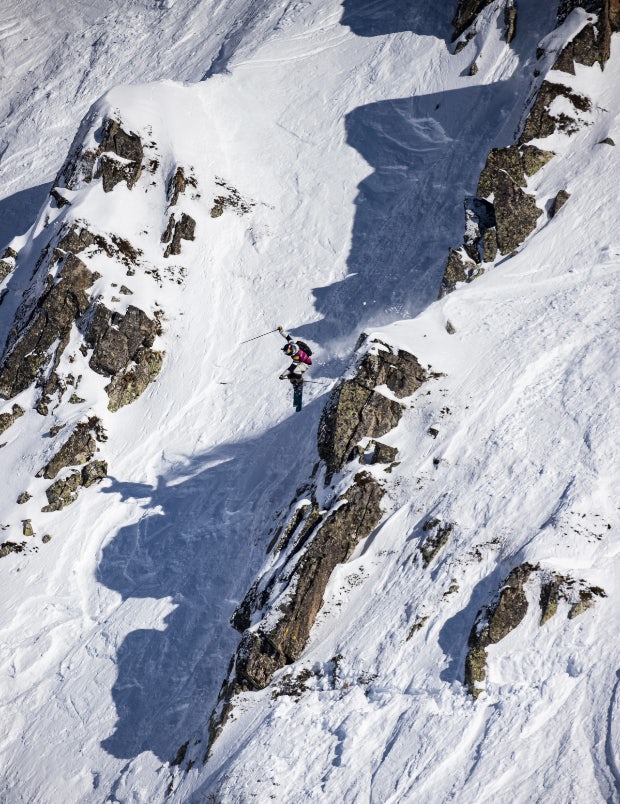
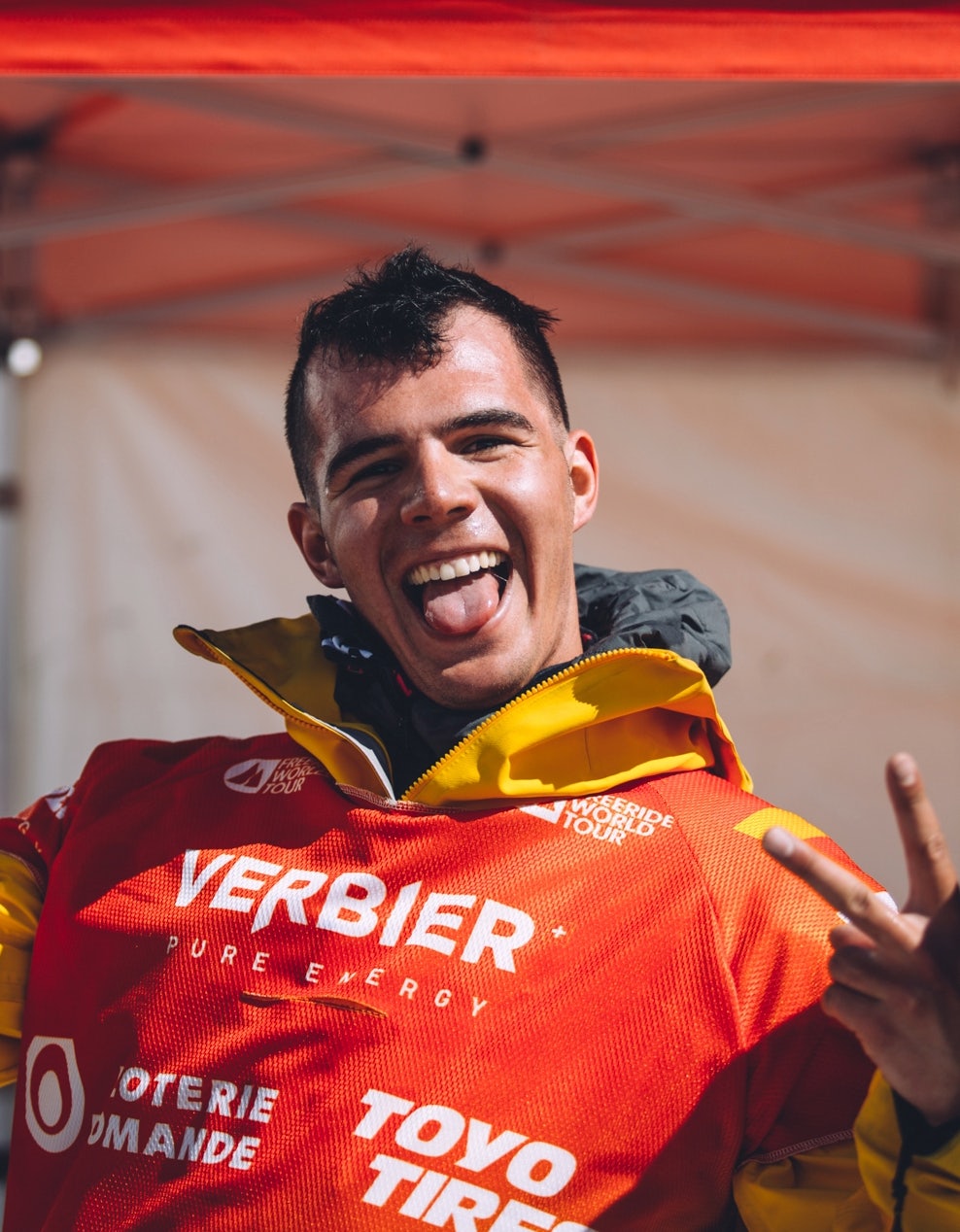
a competition like no other
Launched in the winter of 1996, the Verbier Extreme was originally strictly a snowboard contest. But all that changed in 2004...
what THE history books say
The concept of freeride informs the very soul of the snowsport experience. The notion of freeriding was born the moment folks figured out how to secure their feet onto long planks of wood in order to move easier over the winter landscape – and discovered that they could suddenly shuck the bonds of gravity and fly. They were free. They could ride down the hill at will. They never looked back…
- 1930's - 1940's
As far back as the 1930’s and ‘40’s, legendary ski champion Emile Allais and his merry band of mountain adventurers were already assaulting the couloirs and gullies that dropped from the heady summits around Mt Blanc and Chamonix. Some of their early descents beggar the imagination – especially considering the rudimentary nature of the gear they were using back then.
- 1950's - 1960's
But it took until the late 1960’s and ‘70’s – when Ski Extreme was first coined by the French and the gear had improved substantially – for freeriding to really attract global attention. Much of it was due to the hard-charging styles of its main proponents – visionary mountain men like Sylvain Saudan, Patrick Vallencant, Bruno Gouvy and Jean Marc Boivin – who were stretching the limits of downhill riding in a way that had never been seen before. In these years, freeride was truly extreme. If you fell, you died…
- 1960's - 1980's
But the Americans weren’t far behind. Led by pioneers like Montana’s Bill Briggs and California’s Steve McKinney, a whole new generation of young riders begin testing themselves in the steep slopes of the Rockies, the Wasatch and the Sierra Nevada. More ‘Hollywood’ than their French counterparts, and far more into the entertainment aspects than the Europeans, icons like Glen Plake and Scot Schmidt brought a whole new aesthetic to the American ski experience in the 1980’s. It was their offbeat, out-there style, showcased by filmmaker Greg Stump in such seminal films at Blizzard of Aaaah’s that really set the stage for the launch of the first ever freeride contests.
- 1990's - Today
And what a launch that was! The near-mythical World Extreme Ski Championships (WESC), contested on the hoary slopes of Alaska’s Wasatch Mountains, was the coming out party for a whole new gang of big-mountain freeriders. In fact, the start list for the inaugural 1991 contest reads like a Who’s Who of modern freeriding: Doug Coombs won the inaugural men’s title while Kim Reichhelm was tops in the women.
Meanwhile the Europeans – primarily the French and the Swedes – were honing their big-mountain techniques on the often-nasty inclines around Mont Blanc and the Savoie Region. But the moment they discovered there were contests happening in America, the while game changed. When a French teenager by the name of Guerlain Chicherit unleashed a corker of a run in flat-light and ugly Alaskan conditions to capture his first WESC title back in 1999 (and beat out his mentor, Seb Michaud), few people realized the enormous impact his Valdez victory would have on the freeriding movement. For the new World Champion wasn’t alone. Back home in France were dozens of young chargers just like him. Fast, smooth – and incredibly efficient on skis. Bold beyond belief. Yet completely sure of their stuff – even in big exposure.
This, many ski historian believe, was the true beginning of the freeride revolution…
But what about the snowboarders?
From the very inception of the sport in the early 1980’s, it was clear that the one-plank concept was ideal for attacking gnarly terrain and steep drops. More stable and easier to manage in difficult – or changing – conditions, the snowboard became the new tool of choice for many big mountain adventures. In fact, for many early freeride practitioners, it was a snowboard that got them into the backcountry in the first place!
Like the skiers, the snowboarders of the early 1990’s had their very own Alaska event in which to shine. Launched as the World Extreme Snowboarding Championships in 1992, the event soon morphed into the hugely popular King Of the Hill under visionary Nick Peralta’s guidance. Here too, the start list for these event events reads like a list of snowboarding royalty: Matt Goodwill, Shaun Palmer, Steve Klassen, Julie Zell, Tina Basich, Anthonin Lieutaghi and Axel Pauporté.
It was just a matter of time before the two disciplines would join forces…
But it took a Swiss-Brit entrepreneur by the name of Nicolas Hale-Woods to make it happen. Launched in the winter of 1996, the Verbier Extreme was originally strictly a snowboard contest. But all that changed in 2004 when ten of the world’s top two-planked freeriders were invited to participate. The event was never the same again.
Today, FWT Management SA, a company based in Lutry/Switzerland oversees an annual world ski and snowboard circuit – the Freeride World Tour – that travels from Japan to Canada, the Pyrenees and the Alps with the final event in Verbier. The very cream of the proverbial riders crop – skiers and snowboarders, men and women – all vie for participation in this prestigious event. "The development since 1996 has gone beyond our expectations,” says Hale-Woods. “It’s a great event. But more importantly, the success of the FWT Junior and FWT Qualifier series, with over 130 events and 4,000 licenced riders wordwide is what gives a true dimension to the sport”.
